Landing on the Kuril Islands
Today, few people are surprised by the indisputable fact that historians in the ever-memorable Soviet times often hushed up the failures, but often immensely extolled the successes of our Armed Forces in various campaigns. Alas, we are already accustomed to the fact that nowadays chroniclers, on the contrary, are much more willing to analyze the real and imaginary blunders and shortcomings of the Soviet military command in conducting operations, rather than talk about deserved victories. Where is the truth? Its visible outlines begin to appear only when you evaluate events objectively, and not to please the conjuncture ...
Not even a quarter of a century has passed since the landing of the Soviet landing on the Kuril Islands in 1945 was officially called in all literature a natural and logical move, summing up a kind of outcome of the Second World War. But it seems that those who believe that no one has changed the course so much are right. storieslike the historians themselves: today this military operation is already loudly declared senseless and unjustified. A reasonable question: was that landing and a hot battle on the island of Shumshu really needed three days after the surrender of Japan?
“What is the name of the occupation of a foreign territory after the official signing of the act of surrender? - asks the researcher A. V. Chechulin. - That's right, theft. More precisely, it can be called international robbery - as you like. So we took away the South Kuriles without any bloodshed and resistance not from a strong and armed enemy in the Great War, but took advantage of the situation of helplessness in which Japan found itself, and stole what never belonged to us. " And this is a fairly well-known person who has serious speeches at scientific forums! However, he is not alone: this opinion is shared by many scientists and journalists.
And therefore, for the sake of truth - a short excursion into history, which documentarily testifies: the first foot on the Kuril Islands was a Russian, not a Japanese, despite the fact that the Land of the Rising Sun is geographically closer to the South Kuril Islands. Although this is not surprising, since the Japanese rulers adhered to a policy of isolationism and, under pain of death, forbade their subjects to leave the territories of their principalities and even build large sea vessels.
Unfortunately, few people know that in the 1792th century, not only the Kuriles, but also the island of Hokkaido were not part of Japan. So, the head of the central government of Japan, Matsudaira Sadanobu, back in XNUMX, on the eve of the Russian-Japanese negotiations, reminded his subordinates in a special order that the Nemuro region (Hokkaido island) is by no means Japanese land.
Another confirmation of this fact is a curious petition to Catherine II, sent to her in 1788 by the head of the North-Eastern American Company I. I. Golikov, who asked “to prevent the attempts of other powers to build a fortress and a harbor on the 21st (Shikotan) or 22nd (Hokkaido) from the Kuril Islands for the establishment of trade with China and Japan and to the most capable discoveries and bringing under a high power "the empress" of the "neighboring islands, which we know for certain ... do not depend on any power." Catherine refused, but the point is different: no one in their right mind would offer to build on the transcendental land!
How did the Kuriles end up with the Japanese? It all started with the fact that in 1853 the Anglo-French squadron destroyed part of the Russian settlements in the South Kuriles. And after the sale of Alaska, the Russian-American company, which had been dragging out a miserable existence for some time, stopped fishing on the islands. As a result of this, having lost all interest in the Kuriles, the Russian government in 1875 presented them to Japan in exchange for the departure of the Japanese from South Sakhalin, who were trying to colonize the island.
However, even at the beginning of the twentieth century, if we turn to a fairly accurate and objective source - "The Military Encyclopedia", published in St. Petersburg in 1914, only 600 people lived on the islands, standing "at a very low level of development." Who exactly? The Aino, Kuril peoples, and Kamchadals in the north. And, mind you, not a single word about the Japanese! The latter only in the 30s and early 40s of the last century built many naval bases and airfields on the land donated to them - clearly not for peaceful purposes, for which they transferred thousands of civilian builders to the Kuriles - Japanese, Koreans, Chinese and representatives other nationalities. In addition, the population has also grown due to the fact that along with the servicemen their families arrived, for the service of which infrastructure was required - canteens, laundries, shops, schools, hospitals ...
Whether it was the peaceful development of new territory, as the Japanese often assert, or the purposeful creation of military footholds - judge for yourself. On the islands of Matua, Shumshu, Iturup and others, real underground cities have been erected, focused on military needs. But civil buildings are represented exclusively by wooden temporary barracks, and even small semi-handicraft fish processing and canning factories.
A case in point is the small island of Matua (Matsuwa), whose area barely exceeds 70 square kilometers. By the way, he did not experience the horrors of the war, since his garrison - which is almost 4000 people - surrendered to the Soviet paratroopers without a fight. And today the Japanese airfield at Matua is a masterpiece of engineering: the quality of concrete is impressive - there are almost no cracks on it, despite the fact that more than six decades have passed. It is interesting that the runways were heated by local thermal water, which was supplied through a special trench from the field, which was located, apparently, somewhere on the slope of the Sarychev (Fue) volcano. Consequently, in winter the Japanese had no problems with snow removal.
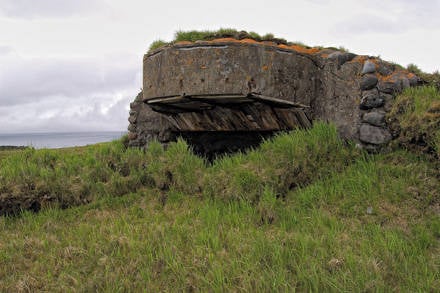 According to an eyewitness, “bunkers and huge reinforced concrete bunkers, both machine-gun and artillery, hang over these bays everywhere. There are also wide, deep caponiers with a concrete base, on which coastal guns of large caliber stood ... The thickness of the concrete floors above the artillery pillboxes is almost one and a half meters, inside the walls are neatly laid out with huge boulders cemented together - this is even aesthetically pleasing. You are amazed at the volume of construction work done here. "
According to an eyewitness, “bunkers and huge reinforced concrete bunkers, both machine-gun and artillery, hang over these bays everywhere. There are also wide, deep caponiers with a concrete base, on which coastal guns of large caliber stood ... The thickness of the concrete floors above the artillery pillboxes is almost one and a half meters, inside the walls are neatly laid out with huge boulders cemented together - this is even aesthetically pleasing. You are amazed at the volume of construction work done here. "By the way, it was from the Kuriles, from a stop in Hitokappu Bay (now Kasatka Bay), that the Japanese squadron on November 26, 1941 began a raid on Pearl Harbor, and the naval bases of Kataon and Kashiwabara on the Shumshu and Paramushir islands were repeatedly used by the Japanese for actions against the Yankees in the Aleutian Islands. Of course, the Americans did not remain in debt and intensively bombed the Kuriles. However, they suffered serious losses. Over tiny Matua alone, about 50 American bombers were shot down. Near the same island in June 1944, the American submarine SS-233 "Herring" surfaced for several minutes to attack a Japanese ship on the surface, but was immediately sunk by coastal batteries. It is surprising that on August 26, 1945, when the Japanese surrendered Matua to our paratroopers, there was almost no artillery left on the island. It is still unknown where the cannons went - either they were drowned in the sea, or hidden in countless underground tunnels and labyrinths.
In February 1945, at the Yalta Conference, in response to urgent requests from the Americans, Stalin clearly outlined one of the main conditions for the entry of the USSR into the war by Japan - the transfer of the Kuril Islands to the Soviet Union. Every single one, not excluding Hokkaido. And there is reason to believe that this statement was based not only on the desire of the country's government to regain the primordially Russian territories, but also on reliable intelligence that the United States plans to occupy the Kuril Islands and place its air force bases there.
And the USSR fulfilled its obligations to the allies: after defeating the Kwantung Army, Soviet troops entered the operational space in Manchuria. However, even after a recording of the emperor's speech was broadcast on Japanese radio, where he announced the acceptance of the conditions of the Potsdam Declaration and his decision to end the war, the artillery cannonade did not subside: the fighting continued in Manchuria, and in Central China, and even in the Philippines. the capture of which the Americans hastened to inform the world a few weeks earlier.
A powerful final operation was needed, and on the night of August 15, the commander-in-chief of Soviet troops in the Far East, Marshal A.M. Vasilevsky, gave the order to seize the island of Shimushu (Shumshu). For the raid, two rifle regiments, two artillery units, a separate anti-tank destroyer battalion and a marine battalion of the Peter and Paul Naval Base were allocated, which were to land on the island from forty ships. Fire support was to be provided by the Kirov and Dzerzhinsky patrol ships, as well as the Okhotsk minelayer and the L-8 submarine. From the air, the operation was covered by the 128th mixed air division and six flying boats MBR-2.
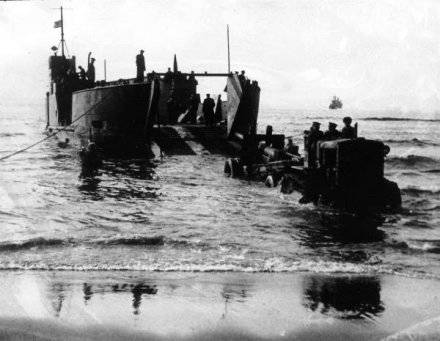 In fact, this was all that the Kamchatka fortified area had at its disposal, parts of which, by the way, had never participated in such hostilities until that memorable day. Why Moscow did not deploy additional forces to Kamchatka in advance is anyone's guess. Most likely, this was prevented by the strictest secrecy requirements in preparing the operation. This explains the sad fact that the group was initially limping on both legs: frankly weak, without exaggeration - its symbolic artillery was to crush the enemy's powerful concrete defenses.
In fact, this was all that the Kamchatka fortified area had at its disposal, parts of which, by the way, had never participated in such hostilities until that memorable day. Why Moscow did not deploy additional forces to Kamchatka in advance is anyone's guess. Most likely, this was prevented by the strictest secrecy requirements in preparing the operation. This explains the sad fact that the group was initially limping on both legs: frankly weak, without exaggeration - its symbolic artillery was to crush the enemy's powerful concrete defenses.Suffice it to recall that the Americans in 1943-1945, attacking the islands, which were much less fortified than Shumshu, drove seven or more battleships with 356-406-mm guns (which was three times the caliber of the half-dozen guns, which the forces supporting the Soviet landing force had) , and several dozen cruisers. And then naval artillery and hundreds of heavy bombers ironed the island for weeks before the Marines landed.
The Kataoka naval base on Shumshu, adapted for the basing of almost any surface ships, had a strong anti-amphibious defense, consisting of several lines of an extensive system of anti-tank ditches, escarpments, as well as nearly 60 pillboxes and bunkers, connected by underground galleries. Almost all fortifications had reinforced concrete cladding, the thickness of the walls of the bunkers reached 3 m, and the depth of underground galleries - 70 m, which ensured invulnerability from artillery strikes and aviation... There were 8500 soldiers on the island, almost 60 tanks, about 100 guns of various calibers and more than 300 machine-gun points. Ammunition and food depots, hospitals, power plants, telephone exchanges and other auxiliary facilities were equipped in numerous tunnels. And all this power was aimed at defense to the last fighter ...
On the evening of August 16, a caravan with a landing party left Petropavlovsk-Kamchatsky and, after more than a day of sailing, approached the island. While an artillery battery of 130-mm guns from Cape Lopatka fired on Fr. Shumshu, the marching headquarters on the patrol ship "Kirov" were forced to correct the coordinates of the landing due to the thick fog. As a result, the troops of the forward detachment landed on the shore not where it was planned, and even despite the command's prohibition, they opened fire on the enemy. Suddenness instantly ceased to be our ally, so the landing commander ordered the ships to begin shelling the enemy in areas, in other words, blindly. One of the shells hit the lighthouse at Cape Kokutan-Saki, which, having caught fire, became an excellent landmark for the attackers.
Despite a fairly strong return fire, which damaged several ships, by 7 o'clock in the morning the Marine Corps battalion and the 302nd Rifle Regiment managed to advance inland, occupy several dominant heights, gaining a foothold on them, and give, albeit small, but still the main landing forces. The Japanese tried to counterattack the vanguard, but, having lost 15 tanks and about 100 infantry, retreated to their original positions. But their artillery did not stop for a minute, knocking out one ship after another (in total, during the landing, five ships were sunk and about ten more were seriously damaged) and cutting holes in the combat formation of the paratroopers. Under its cover and with the support of tanks, the enemy launched a second counterattack, this time successful, significantly squeezing the forces of the vanguard. And a couple of hours before noon, Japanese planes appeared in the air, alternately bombing the transport, firing machine guns at the soldiers. Unfortunately, because of the fog, our aviation was unable to establish cooperation with the landing force in the landing area and limited itself to several strikes at the naval bases of Kataoka (on Shumshu) and Kashiwabara (on Paramushir).
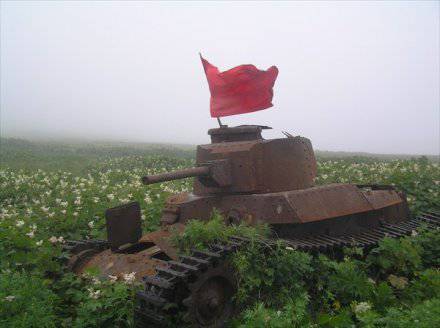 It took several hours for parts of the main landing force to approach the positions that were stubbornly defended by the forward detachment, and, having united, the Soviet troops went on the offensive. It was then that Sergeant-Major Nikolai Vilkov performed the feat, covering the embrasure of the enemy bunker with his body. The heights passed from hand to hand three times, but by nine o'clock in the evening, the landing finally took possession of them.
It took several hours for parts of the main landing force to approach the positions that were stubbornly defended by the forward detachment, and, having united, the Soviet troops went on the offensive. It was then that Sergeant-Major Nikolai Vilkov performed the feat, covering the embrasure of the enemy bunker with his body. The heights passed from hand to hand three times, but by nine o'clock in the evening, the landing finally took possession of them.All night, while the infantry was digging in on the busy line between the Kokutan-Saki and Kotomari-Saki capes, under the fire of three Japanese batteries, the unloading of artillery, armored vehicles and vehicles on the coast continued, which was completed only in the afternoon.
In the morning, alarming intelligence was received: about three dozen Japanese ships were moving towards Shumshu Island. Several attempts by our troops to develop the offensive were unsuccessful. However, as it soon became clear, it was no longer important. At 16.30, the commander of the Japanese troops in the Kuril Islands sent an envoy to the command of the Soviet landing party with a proposal to stop hostilities and begin negotiations on the terms of surrender, the act of which was signed just an hour and a half later.
The ink on the document was barely dry when the order came from the commander fleet "Together with the commander of the Kamchatka defensive region, occupy the northern part of the Kuril Islands to the island of Shimushiro-To [now the island of Simushin] until August 25 ... Independently communicate with the Japanese command and establish the procedure for receiving and disarming enemy troops." It was also decided to consider any actions of the Japanese, not coordinated with the Soviet side, as a violation of the act of surrender and take appropriate tough measures. In particular, the submarine commanders received an order to prevent the evacuation of the Japanese from the Kuril Islands, after which, for example, the L-8 submarine, which covered the landing, took a combat position in the Fourth Kuril Strait in readiness to torpedo any Japanese ship departing from the Shumshu Islands and Paramushir along the east and west coast.
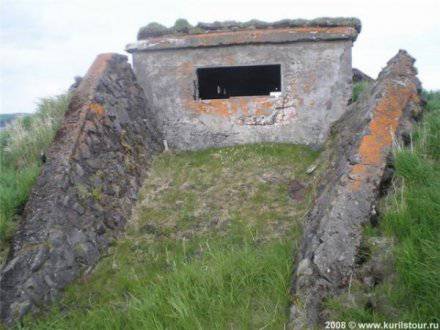 According to the terms of surrender, the Soviet ships, accompanied by a Japanese pilot, were to arrive on the island and occupy the Kataoka naval base. In the early morning of August 20, a detachment consisting of the Okhotsk minelayer, the Kirov and Dzerzhinsky patrol ships, the T-525 minesweeper, the Emelyan Pugachev transport and the Polyarny hydrographic vessel under the general command of Captain 1st Rank D. G. Ponomarev arrived at the appointed place at the appointed time. Time passed, but there was still no pilot, and then Ponomarev decided to follow to Kataoka on his own.
According to the terms of surrender, the Soviet ships, accompanied by a Japanese pilot, were to arrive on the island and occupy the Kataoka naval base. In the early morning of August 20, a detachment consisting of the Okhotsk minelayer, the Kirov and Dzerzhinsky patrol ships, the T-525 minesweeper, the Emelyan Pugachev transport and the Polyarny hydrographic vessel under the general command of Captain 1st Rank D. G. Ponomarev arrived at the appointed place at the appointed time. Time passed, but there was still no pilot, and then Ponomarev decided to follow to Kataoka on his own.But as soon as the ships entered the Second Kuril Strait, they suddenly found themselves in the epicenter of shelling from the islands of Shumshu and Paramushir. As a result of three hits, Okhotsk was damaged, people were killed ... Covering themselves with smoke screens and firing in return, the detachment retreated into the sea, where it was immediately attacked by a Japanese torpedo plane, which was soon put to flight by the naval artillery.
The situation was immediately reported to the commander of the Pacific Fleet and the commander of the front. There was a temporary lull: the Japanese were clearly delaying the surrender, our side did not want to ask for trouble. And then Moscow intervened. On the morning of August 21, the command of the landing on Shumshu received a message from the headquarters: “The Supreme Commander-in-Chief authorized the suspension of the offensive to clear the Shimushu Island and the actions of the fleet to seize the port of Kataoka for one or two days. This additional period should be used by you for detailed preparations for the offensive to clear the island of Shimushu by the morning of 23 August. By this time, General Grechko is obliged to strengthen his troops on the island of Shimushu by transferring two rifle regiments from Kamchatka. The operation to take possession of the Paramushir island should be carried out immediately after the cleansing of the Shimushu island, based on the latter. "
Without waiting for the implementation of the measures prescribed by J.V. Stalin, the commander of the Japanese troops on the northern islands of the Kuril ridge, Lieutenant General Tsutsumi-Fusaki, on August 22, accepted the terms of surrender and withdrew his units on the Shumshu island to the places indicated by the Soviet command for surrender. About 14 thousand Japanese soldiers and officers were disarmed, 45 tanks, artillery pieces and other military equipment were captured. And on August 23, Soviet troops occupied Shumshu Island and the northern part of Paramushir Island without firing a single shot. For participation in this operation, nine people were awarded the title of Hero of the Soviet Union, many were awarded orders and medals.
In total, almost 50,5 thousand Japanese soldiers, officers and generals were disarmed and captured on the Kuril Islands, over 300 guns and mortars, about 1000 machine guns were captured ...
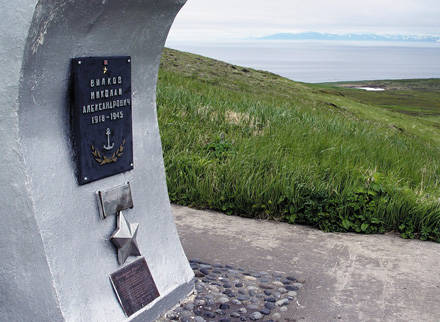 “We took away the South Kurils without any bloodshed or resistance from a strong and armed enemy,” A. Chechulin and his associates say. Is this a delusion, a denial of the obvious, or a fashionable tribute to the conjuncture? According to the Central Naval Archives, we lost 1567 people killed and wounded, although local historians believe that the number of deaths was much higher. And it was not a lightly armed people's militia that opposed our troops, but a powerful group, for the further use of which the Japanese government had very aggressive plans: the captured Japanese officers were found to have maps of Kamchatka with the most important state and military objects marked on them, and in some cases - with diagrams our antiamphibious defense.
“We took away the South Kurils without any bloodshed or resistance from a strong and armed enemy,” A. Chechulin and his associates say. Is this a delusion, a denial of the obvious, or a fashionable tribute to the conjuncture? According to the Central Naval Archives, we lost 1567 people killed and wounded, although local historians believe that the number of deaths was much higher. And it was not a lightly armed people's militia that opposed our troops, but a powerful group, for the further use of which the Japanese government had very aggressive plans: the captured Japanese officers were found to have maps of Kamchatka with the most important state and military objects marked on them, and in some cases - with diagrams our antiamphibious defense.And one more thing: can one call a senseless military operation, after which many Japanese garrisons in the Kuril Islands surrendered to the Soviet paratroopers without resistance? Of course no. Nevertheless, the seizure of the rest of the Kuril Islands was not a fun walk. But that's a completely different story ...
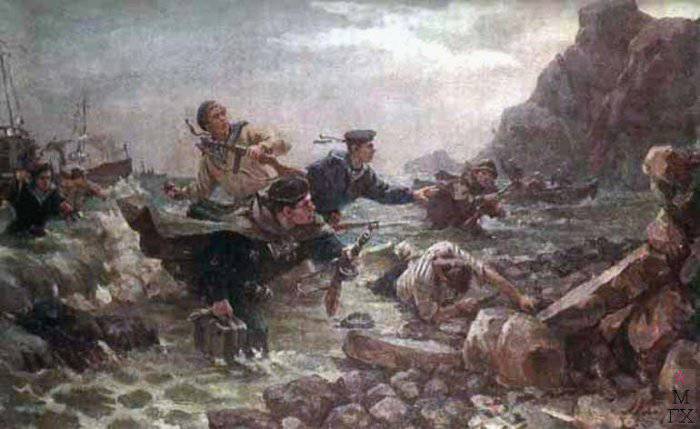
Information